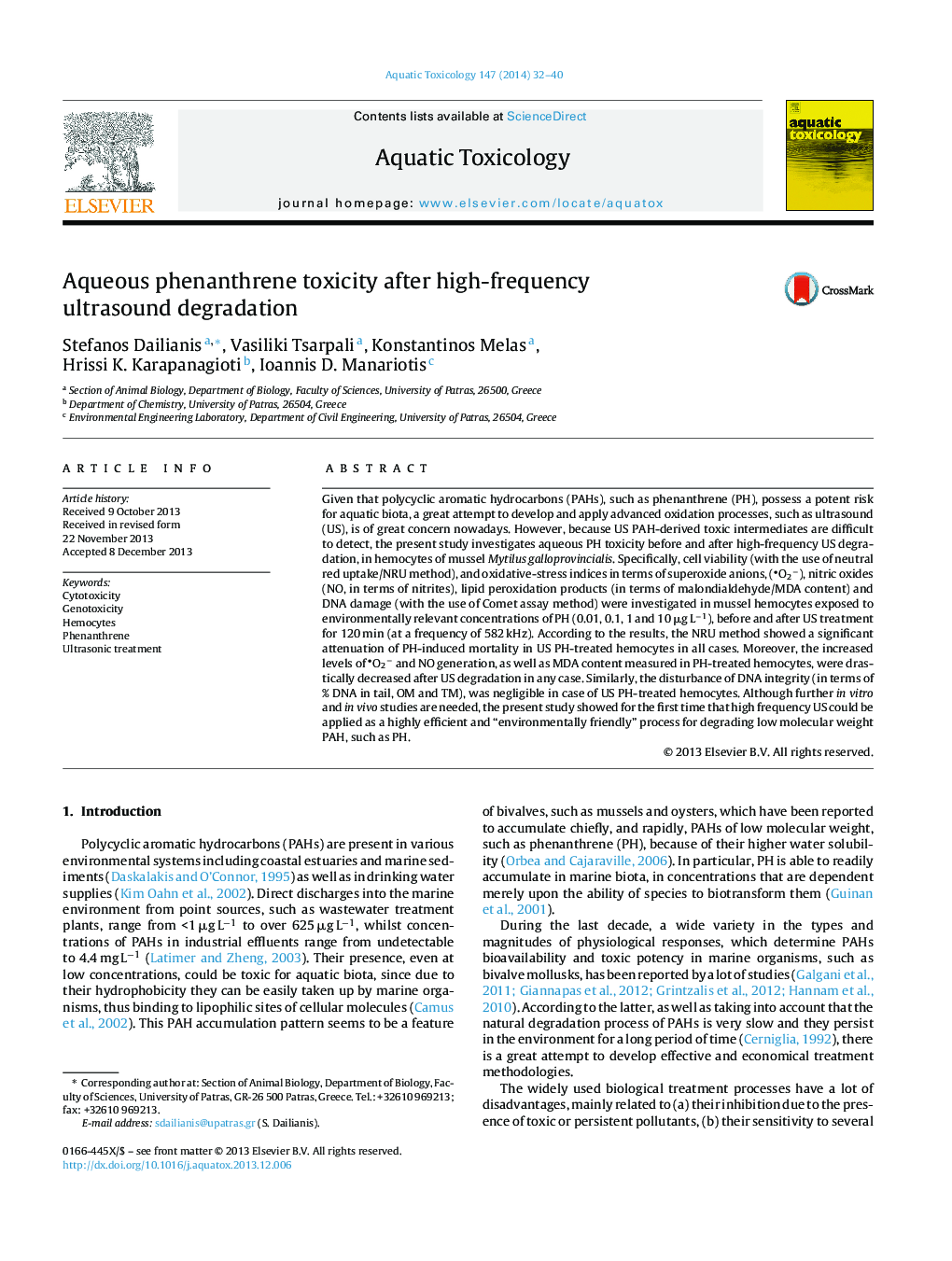| Article ID | Journal | Published Year | Pages | File Type |
|---|---|---|---|---|
| 4529399 | Aquatic Toxicology | 2014 | 9 Pages |
•PH induces cytotoxic, oxidative and genotoxic effects on mussel hemocytes.•Ultrasound PH degradation diminishes its cytotoxic and oxidative effects.•Ultrasound treated PH was characterized by low genotoxic potential.•Ultrasound PH degradation does not seem to produce toxic PH intermediates.•PH-ultrasound treatment could be applied as an “environmentally friendly” process.
Given that polycyclic aromatic hydrocarbons (PAHs), such as phenanthrene (PH), possess a potent risk for aquatic biota, a great attempt to develop and apply advanced oxidation processes, such as ultrasound (US), is of great concern nowadays. However, because US PAH-derived toxic intermediates are difficult to detect, the present study investigates aqueous PH toxicity before and after high-frequency US degradation, in hemocytes of mussel Mytilus galloprovincialis. Specifically, cell viability (with the use of neutral red uptake/NRU method), and oxidative-stress indices in terms of superoxide anions, (O2−), nitric oxides (NO, in terms of nitrites), lipid peroxidation products (in terms of malondialdehyde/MDA content) and DNA damage (with the use of Comet assay method) were investigated in mussel hemocytes exposed to environmentally relevant concentrations of PH (0.01, 0.1, 1 and 10 μg L−1), before and after US treatment for 120 min (at a frequency of 582 kHz). According to the results, the NRU method showed a significant attenuation of PH-induced mortality in US PH-treated hemocytes in all cases. Moreover, the increased levels of O2− and NO generation, as well as MDA content measured in PH-treated hemocytes, were drastically decreased after US degradation in any case. Similarly, the disturbance of DNA integrity (in terms of % DNA in tail, OM and TM), was negligible in case of US PH-treated hemocytes. Although further in vitro and in vivo studies are needed, the present study showed for the first time that high frequency US could be applied as a highly efficient and “environmentally friendly” process for degrading low molecular weight PAH, such as PH.
